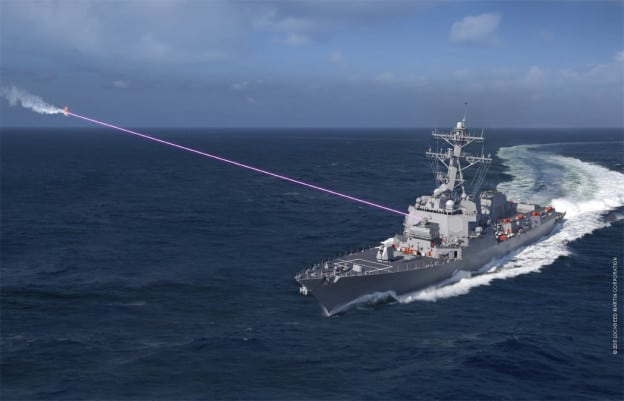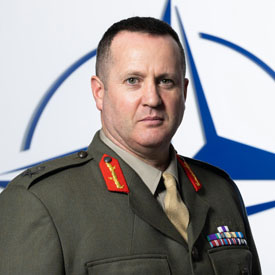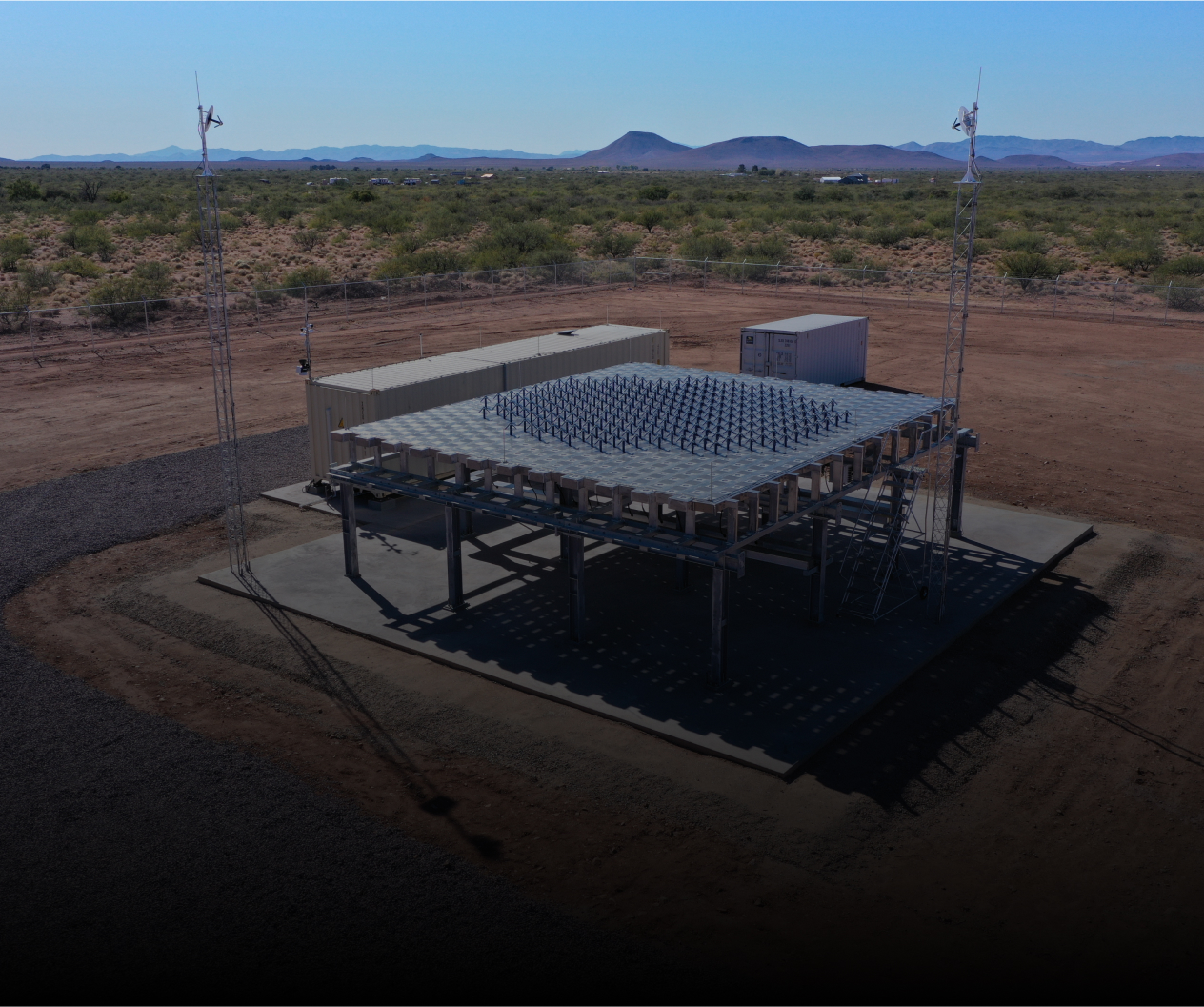The Navy’s top officer revealed a laser weapon installed on a destroyer to test an ability to disable drones and small boats has had problems in testing and is still not up to its full advertised 60 kW power output.
“We had some problems with testing, but now we’re up to one-third of the power, and we’re going to continue to test that weapon system to make sure it works,” Acting Chief of Naval Operations Adm. James Kilby said about the High Energy Laser with Integrated Optical-dazzler and Surveillance (HELIOS) system during a May 14 House Appropriations Committee hearing.
HELIOS is installed on the
Arleigh Burke-class destroyer USS Preble (DDG-88). The Navy means to use it to test disabling unmanned aircraft systems (UAS) and small boats with its laser weapon. It has a secondary use as a counter-UAS intelligence, surveillance and reconnaissance (ISR) dazzler that blinds or confuses UAS sensors. HELIOS also feeds more ISR data into the destroyer’s combat system.
HELIOS is also fully integrated with the Aegis Combat System.
Lockheed Martin [LMT] first delivered the 60+kW-class laser system to the Navy in 2022, ultimately installed on the Preble (Defense Daily, Aug. 18, 2022).
Kilby’s note about HELIOS delays adds more details to what a former Navy and current company official said in January during the WEST 2025 conference (Defense Daily, Jan. 30).
At the time, Vice President of Strategy and Naval Systems at Lockheed Martin’s missile and fire control division Thomas Copeman underscored HELIOS was on the Preble for 25 months by then but with very limited test time.
“The problem is the prioritization of everything else that’s going on in the world and the maintenance and operations and stuff has limited the amount of underway test times, test days that we’ve had with the system,” Copeman said. Copeman previously served as a former commander of Naval Surface Forces.
Last year, Commander of Naval Surface Force (SWOBOSS) Vice Adm. Brendan McLane said he wants to see the Navy significantly accelerate deployment of directed energy systems like HELIOS to deal with the kind of weapons Houthis forces have used in the Red Sea (Defense Daily, Jan. 9, 2024).
At the time, McLane expressed frustration that there have been few deployed advanced in the past decade, since he saw the Afloat Staging Base Ponce (AFSB(I)-15) test with a 30-kW Laser Weapons System (LaWS) while commander of Destroyer Squadron 50 in Bahrain.
In 2021, Joe Ottaviano, then-director of Lockheed Martin’s Advanced Product Solutions business division, said while HELIOS is targeted for a 60kW output, it is classified at 100-kW and the modules can be popped out to make it capable of delivering a higher power output level upward of 150 kW to target some kinds of missiles (Defense Daily Jan. 11, 2021).
The original Navy contract with Lockheed Martin would have allowed production for up to nine HELIOS systems, but the Navy never executed those orders.
During the hearing, Kilby repeated his recent argument about having “buyer’s remorse” about choices while serving as the deputy chief of naval operations for warfighting requirements and capabilities (OPNAV N9) earlier in his career. N9 serves as the fleet architect and integrator for warfare systems requirements, including procurement.
“I was focused on a laser between 500 kilowatts and one megawatt, because that’s what it takes to knock down an anti-ship cruise missile. I wish I had been a little bit more thoughtful and taken a lesser power weapon that would have been capable against UASs,” Kilby said.
While the Navy is continuing to test HELIOS, he reiterated they are also strapping several cheaper systems for the counter-UAS mission on the Ford Carrier Strike Group, set next to deploy from the East Coast. This may include the Coyote missile, high velocity projectile from the five-inch gun, or Longbow missile.
“So we’re going to put those on that system. They’re not fully integrated with the combat system, but I think they’ll be very effective. And we’ll test them out at sea, and then we’ll procure them at scale if we need to,” Kilby said.






